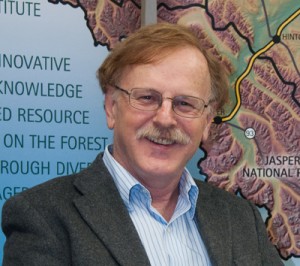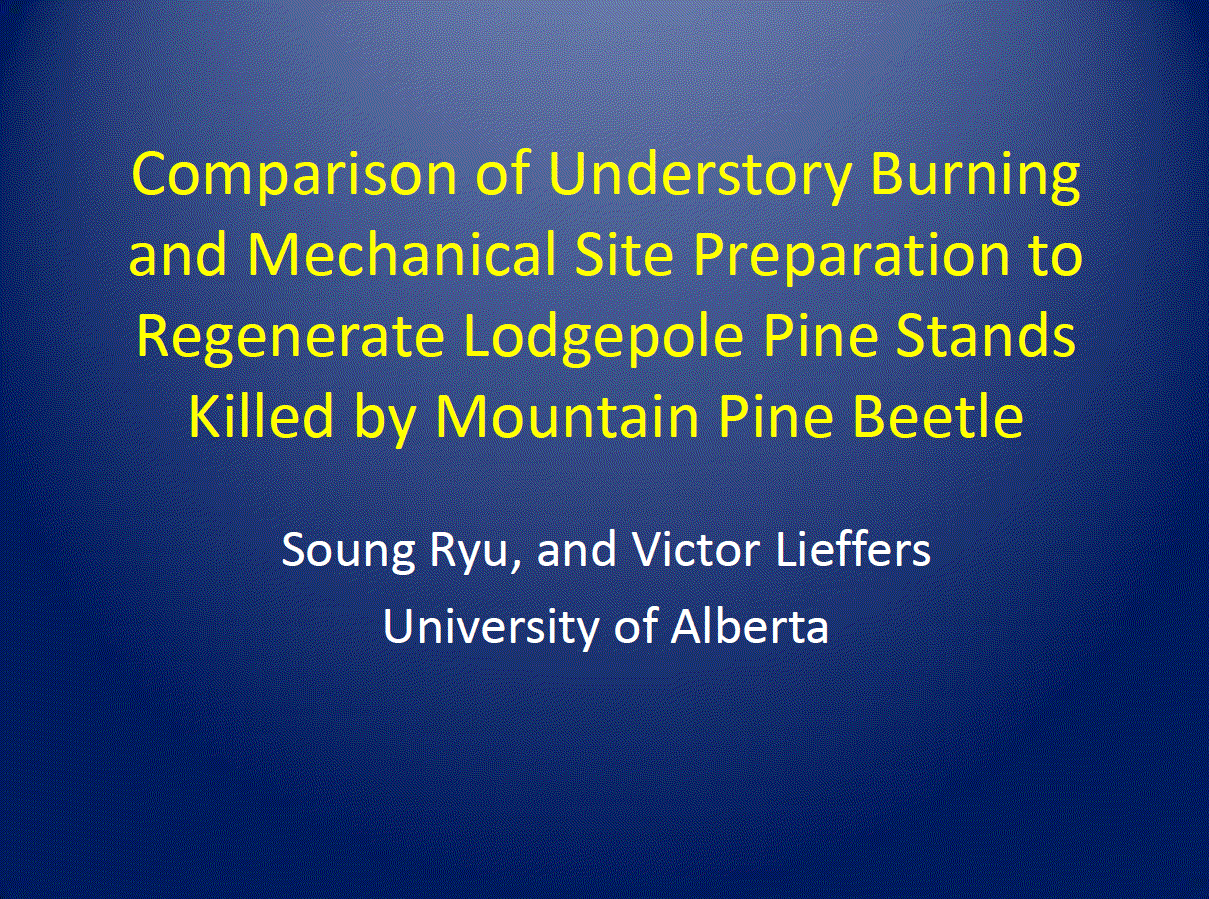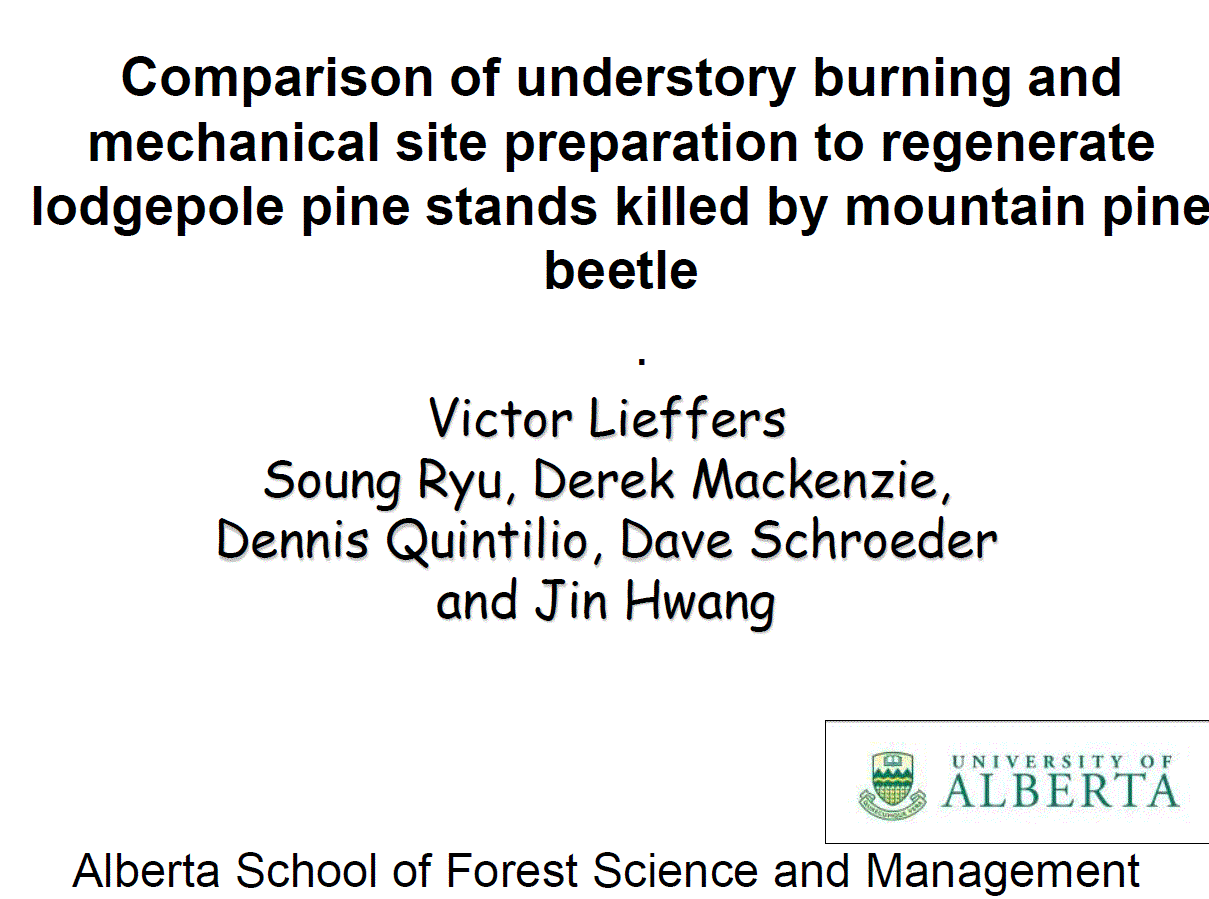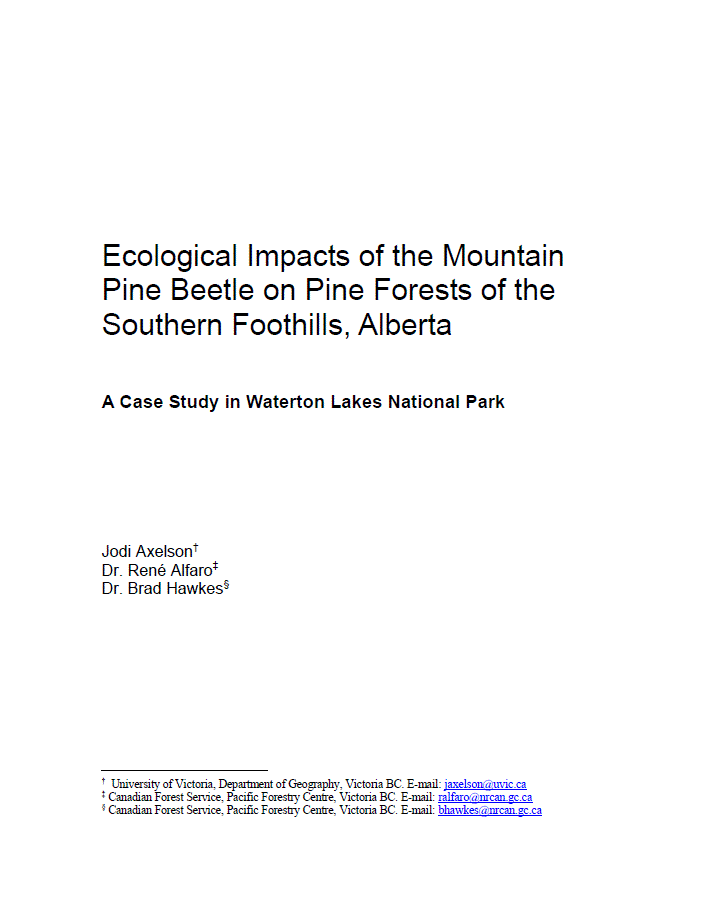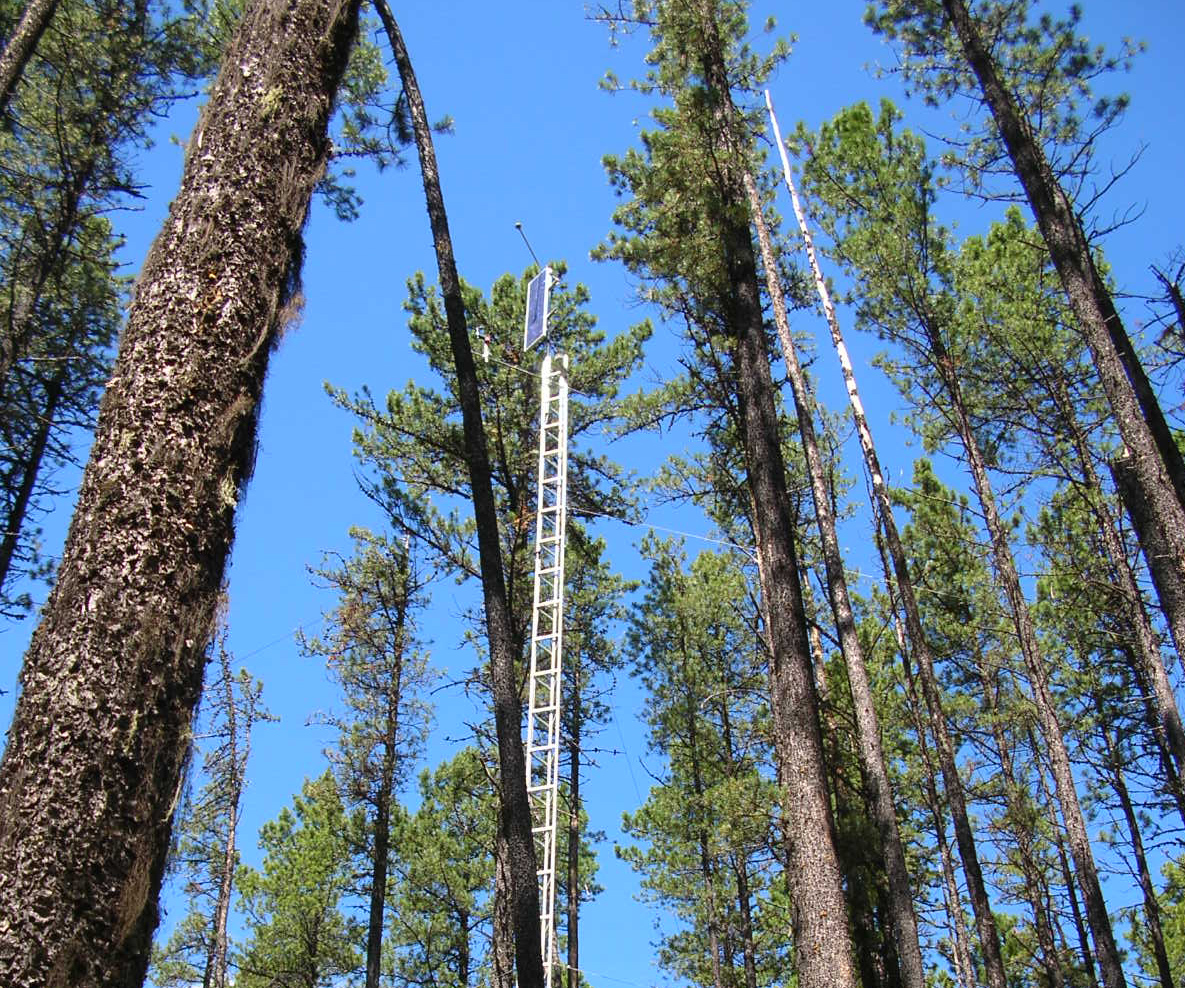
Comparison of Understory Burning and Mechanical Site Preparation to Regenerate Lodgepole Pine Stands Killed by MPB
While detection and control efforts are key to mitigating MPB, it’s also important to improve how land managers respond after an attack. Controlled burns may be an inexpensive way to regenerate and decrease flammability in lodgepole pine stands killed by mountain pine beetle. In stands with aspen or high soil nutrients, blade scarification may be more effective way to renew these sites as there likely will be less aspen suckering and less vegetation re-growth. Blading may also produce a better seedbed, if there is insufficient duff removal by the fire.
Study Components
- Horse Creek area: lodgepole pine-dominated plots for mechanical site preparation, low intensity/control burning, and unburned controls.
- Archer Lake area: continued monitoring of 2007 simulated MPB attack followed by 2009 controlled burning in jack-pine dominated stands.
- An experiment on how site conditions and fire intensity affect lodgepole pine regeneration.
Objectives
- Determine the efficacy of burning to regenerate lodgepole pine stands killed by MPB, especially in terms of depth of burn and fuel loading. Fire behavior and pine regeneration will be determined for two ecosites, three levels of stand mortality and at two stages of mortality.
- Determine if burning is superior to mechanical site preparation as a tool for renewal of these stands. Comparison will be made in terms of cone density, pine seedling density, nutrient mineralization and vegetation competition.
- Collect fire behavior baseline data to verify or adjust the Fire Weather Index System with fuel moisture content in lodgepole stands killed by MPB.
This study addresses the damage to cones on the ground at time of burning to determine if regeneration must depend upon seed from the canopy. This has implications for the effectiveness of burning the MPB stands later into the grey stage. We also evaluate if the moisture content of fine fuel is significantly altered by MPB kill which may influence future landscape level fire behaviour. We are also determining if burning is more effective immediately after kill from MPB or if the burning should be delayed by up to four years. Finally, this study determines if there are major differences in seedling response in lower elevation and rich sites compared to higher elevation and poor site conditions.
Project kicks off, led by Denis Quintilio
Plots selected and set up; initial assessments made
The planned prescribed burn was not completed due to weather conditions
Prescribed burn and mechanical thinning carried out
Data collection and analysis underway
Final report submitted

